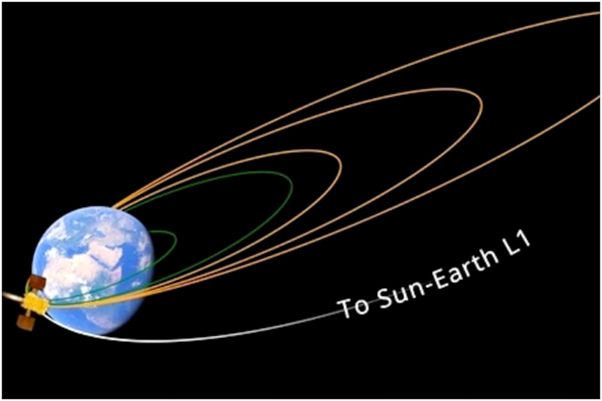In its latest update, the Indian Space Research Organisation (ISRO) declared the successful completion of the second Earth-bound maneuver by Aditya-L1 in the early hours of Tuesday. ISRO reported, "The second Earth-bound maneuver (EBN#2) was executed successfully from ISTRAC, Bengaluru. ISTRAC/ISRO's ground stations at Mauritius, Bengaluru, and Port Blair closely tracked the satellite during this operation. The newly attained orbit measures 282 km x 40225 km (sic)," shared ISRO on 'X' (formerly known as Twitter).
ISRO went on to reveal that the next maneuver (EBN#3) is scheduled for September 10, 2023, around 02:30 Hours (IST). Earlier, on September 3, Aditya-L1 accomplished the inaugural Earth-bound maneuver of India's maiden solar mission, with the space agency confirming the satellite's excellent health and nominal performance.
Aditya-L1 Set for Two More Earth-bound Orbital Maneuvers
Before its journey to the Lagrange point L1, Aditya-L1 will undergo two additional Earth-bound orbital maneuvers. It is anticipated that Aditya-L1 will reach its intended orbit at the L1 point after approximately 127 days.
It is noteworthy that Aditya-L1 is India's premier space-based observatory designed to explore the Sun from a halo orbit positioned around the first sun-earth Lagrangian point (L1), which is situated roughly 1.5 million km from Earth. On September 2, ISRO's Polar Satellite Launch Vehicle (PSLV-C57) effectively deployed the Aditya-L1 spacecraft from the Second Launch Pad of Satish Dhawan Space Centre (SDSC), Sriharikota.
Aditya-L1 Successfully Positioned in Elliptical Orbit
Following a flight duration of 63 minutes and 20 seconds, the Aditya-L1 spacecraft was successfully positioned into an elliptical orbit measuring 235x19500 km around the Earth. Aditya-L1 carries seven scientific payloads developed domestically by ISRO and national research laboratories, including the Indian Institute of Astrophysics (IIA), Bengaluru, and the Inter-University Centre for Astronomy and Astrophysics (IUCAA), Pune.
These payloads are designed to observe the photosphere, chromosphere, and the outermost layers of the Sun (the corona) using electromagnetic particle and magnetic field detectors. Four of the payloads directly observe the Sun from the unique vantage point of L1, while the remaining three payloads conduct in-situ studies of particles and fields at the Lagrange point L1, offering crucial insights into the propagation effects of solar dynamics in the interplanetary medium, as stated by ISRO.






